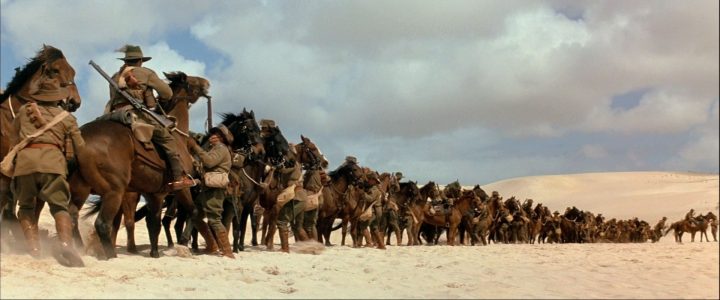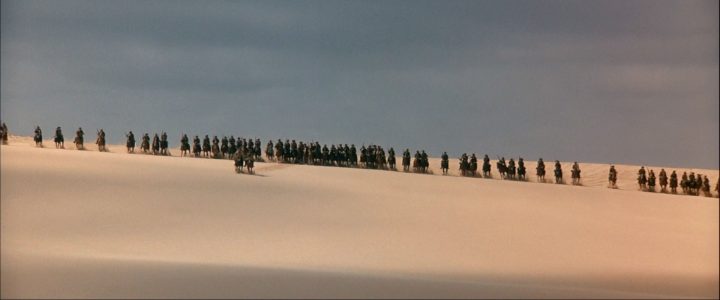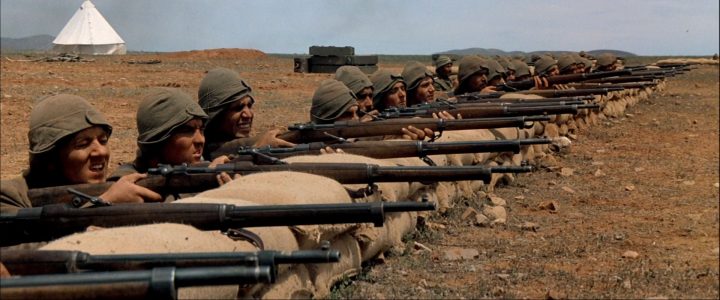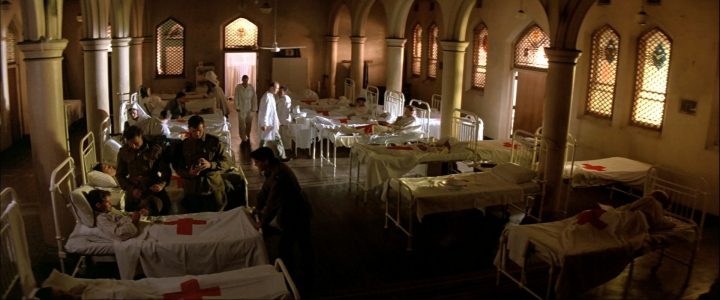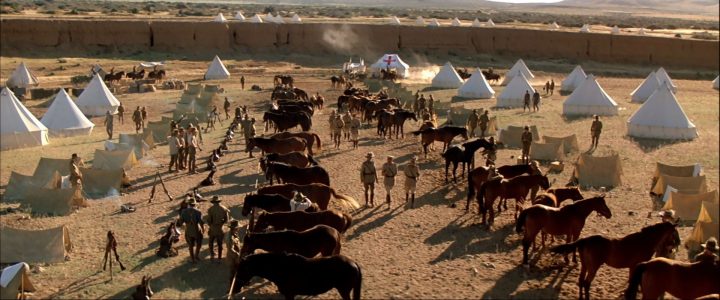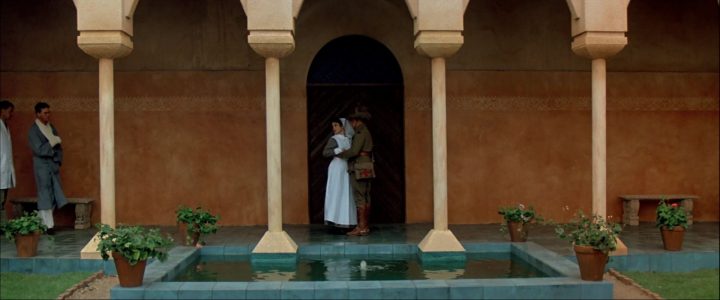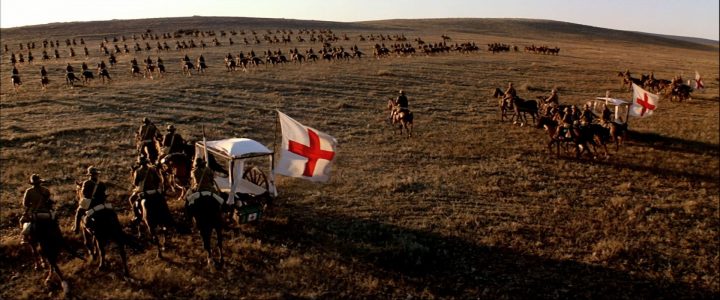
The Lighthorsemen (1987)
In the Flashback series our writer Dag Sødtholt is shedding light on interesting and perhaps a bit overlooked films. The presentations will vary in scope. Since they are meant to inspire the reader to seek out the films, the articles and the accompanying images will avoid spoilers. Currently there is a special focus on 1980s films.
*
An excellent war film by the very fine Australian craftsman Simon Wincer, with an absolutely electrifying extended climax, The Lighthorsemen (1987) tells the story of a 1917 Australian odds-defying cavalry charge on Beersheba in Palestine.
The city has to be conquered or else lack of water will mean disaster for troops and horses. The narrative leading up to the battle follows a quite traditional trajectory, but Wincer makes it continuously interesting as cinema, turning the featureless landscape into visually spectacular minimalism, otherwise heavily concentrating on mood as the soldiers are waiting to see action, with lots of attention to male bonding and also the intense relationships with their horses. There is also an amusing counter-intelligence subplot to deceive the city’s Turkish defenders. The prologue swathed in the lush greens of the hero’s Australian surroundings forms a nice contrast to the barrenness of the later war theatre and contains some very nice visual tricks of its own.
The Lighthorsemen can make up a fitting double bill with another Middle East World War I movie featuring Australian troops, Peter Weir‘s Gallipoli (1981), although Wincer’s film lacks its anti-war aspect.
The film is released on a fine Australian Blu-ray, which can be ordered here. (There is also a German Blu-ray.) This release contains the 116 minute theatrical cut, but there is a 15 minute longer director’s cut but to our knowledge that has only ever been released on Laserdisc.



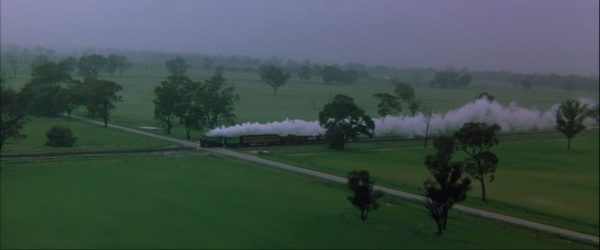


There is an inspired juxtaposition of one of the film’s most harrowing scenes, the hero staring down at the dying enemy, which dissolves into the happiest, most carefree situation:
Here the soldiers are on a short leave by the sea, and as a testament to the close bond between rider and horse, they give new meaning to riding bareback:
*










